A
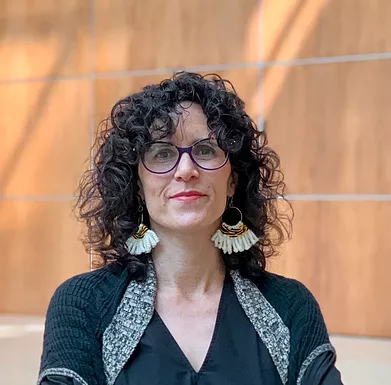
Participant
Laura Allen
Curator of Native American Art
Montclaire Art Museum
Montclaire, NJ, USA
Laura J. Allen is an interdisciplinary scholar and the Curator of Native American Art at the Montclair Art Museum. She holds a B.S. in Biology from Bates College and an M.A. in Decorative Arts, Design History, and Material Culture from Bard Graduate Center. Her research focuses on Northwest Coast Native material culture, particularly dress and textiles. She has supported the American Museum of Natural History, the University of Alaska Museum of the North, and other organizations in both cultural and scientific projects.
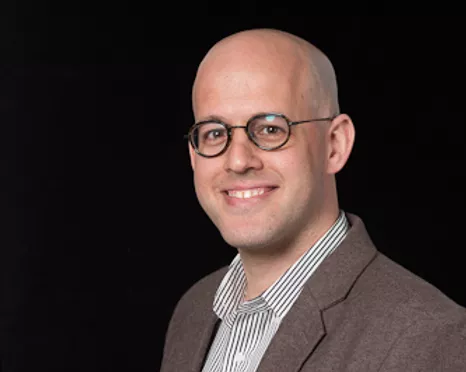
Participant
Niv Allon
Associate Curator
Department of Egyptian Art
Metropolitan Museum of Art
New York, NY, USA
Associate Curator in the Department of Egyptian Art at the Metropolitan Museum of Art, where he focuses on art of the Ramesside Period (ca. 1295-1070 B.C.) and on textual objects throughout Egyptian history. He earned his MA from the Hebrew University, Jerusalem in Biblical Studies and his PhD in Egyptology from Yale University and has published on scribes, literacy, and concepts of violence in ancient Egypt.

Participant
Alba Alvarez
Postdoctoral Fellow
Marie Sklodowska-Curie Postdoctoral Research Fellow
University of Antwerp
Antwerp, Belgium
Alba Alvarez is currently a Marie Sklodowska-Curie Postdoctoral Research Fellow at the University of Antwerp and the Rijksmuseum. From 2017 to 2019, she was a postdoctoral fellow at the Smithsonian’s Museum Conservation Institute. She holds a M.Sc. in Conservation Science and a PhD in Analytical Chemistry. Her research is focused on optimizing mass spectrometry protocols for the analysis of organic materials, with special interest in preventive conservation.
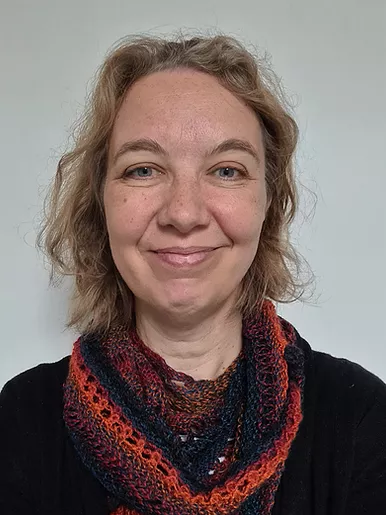
Team Presenter
Cecil Krarup Andersen
The Royal Danish Academy
Copenhagen, Denmark
Cecil’s research focuses on painting’s technique, mechanical properties in paints and painting material including mechanical degradation related to climate control in museums / collection and the effect of structural conservation of canvas paintings. At present Cecil is for example involved with the Horizon2020 EU research and innovation project CollectionCare. The aim of this project is to create an integrated decision support system for small and medium size collections with regards to preventive conservation. This involves computer simulation of degradation scenarios for canvas paintings. Cecil is chair of the advisory board and member of the steering committee in this project. Cecil reviews for several international journals.

Co-Organizer
Julie Arslanoglu
Research Scientist
Department of Scientific Research
Metropolitan Museum of Art
New York, NY, USA
Julie Arslanoglu is a Research Scientist at the Met. She investigates paints, coatings, adhesives, and the organic materials found in artworks across all ages using spectroscopy (FTIR), mass-spectrometric (GC/MS, Py-GC/MS. MALDI, LCMS) and immunological techniques (ELISA), with emphasis on natural and synthetic polymer identification and degradation. Her research interests include interactions between pigments and binders, especially proteins, polysaccharides, lipids, and their mixtures.
Poster Presenter
Lauren Audi
The American Museum of Natural History
New York, USA
Lauren Audi is the Senior Genomics Lab Manager at the American Museum of Natural History and a plant biologist. In this position she supports the interdisciplinary research of curators, scientists, students and affiliates at the museum. This includes providing expertise in molecular biology and genetic techniques across a wide discipline of research questions -- from evolution, ecology, conservation and disease detection.
Participant
Jesse Ausubel
B

Team Presenter
Aniko Bezur
Wallace S. Wilson Director of Scientific Research
Institute for the Preservation of Cultural Heritage
Yale University
West Have, USA
Aniko Bezur is the Wallace S. Wilson Director of theTechnical Studies Laboratory at Yale’s Institute for the Preservation of Cultural Heritage. Decoding the materiality of objects in Yale’s museums and the library is at the heart of their activities and expertise, carrying out materials analysis to address questions related to objects in Yale’s collections which emerge during their scholarly study, conservation, and during their use in teaching and exhibition. She oversees a research group that includes scientists and a conservator. A key mandate of her position is to increase our capacity to characterize materials by improving our capacity to use existing analytical tools and data analysis; by researching and advocating the purchase of new instrumentation; and by developing new instrumentation or tools and analytical methodologies.
Session: Extracting Stories from DNA preserved by 19th century Americana
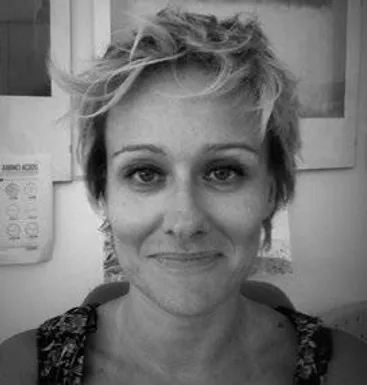
Participant
Ilaria Bonaduce
Associate Professor
Department of Chemistry and Industrial Chemistry
University of Pisa
Pisa, Italy
Ilaria Bonaduce is Associate Professor at the Department of Chemistry and Industrial Chemistry of the University of Pisa. She teaches Analytical Chemistry for the master course and the bachelor course in Chemistry. Her research focuses on the development and implementation of analytical methods for characterising organic materials collected from artworks, as well as understanding physico-chemical processes involved in paint film formation and degradation. Her research is mainly based on the use of mass spectrometry and analytical pyrolysis.

Participant
Caroline Bouvier
PhD student
Laboratory of Molecular and Structural Archaeology
Sorbonne University
Paris, France
Caroline Bouvier graduated in analytical chemistry and materials science in 2018, and had her first working experiences on painting materials using FTIR and Raman spectroscopies. Currently a PhD candidate in the Laboratory of Molecular and Structural Archaeology (Paris), she works on the analysis of cross sections using Time-Of- Flight Secondary Ion Mass Spectrometry, focusing on the binders identification, and on developing the imaging methodology and the data processing thanks to an adapted spectral database.
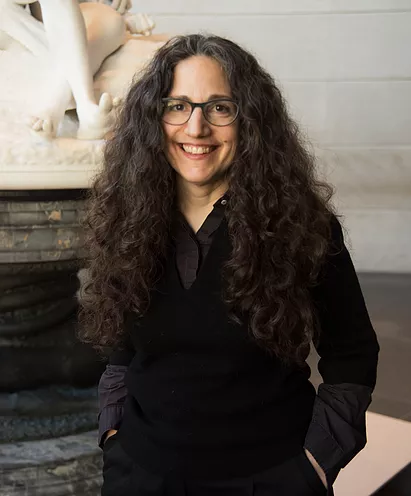
Participant
Lisa Bruno
Conservator
Carol Lee Shen Chief Conservator
Brooklyn Museum
New York City, NY, USA
Lisa Bruno is the Carol Lee Shen Chief Conservator at the Brooklyn Museum. She is an objects conservator by training with a MS in Art Conservation from the University of Delaware/Winterthur Museum. Interests are in materials identification to understand the construction and deterioration of art materials. Past research projects analyzed materials used in ancient Egyptian mummification practices and currently the lab has begun a project to examine and identify materials used to construct Kachinas.
C

Participant
Anthony Caragiulo
Assistant Director of Genomic Operations
Sackler Institute for Comparative Genomics
American Museum of Natural History
New York, NY, USA
I'm the Assistant Director of the Institute for Comparative Genomics at the American Museum of Natural History in New York. My research focuses on population and conservation genetics to understand drivers of diversification, large-scale movements, and genetic adaptation primarily in carnivores and other large mammals. A major research interest of mine is using museum specimens in my research and applying genetic methods to identify the biological origins of museum specimens and artifacts.
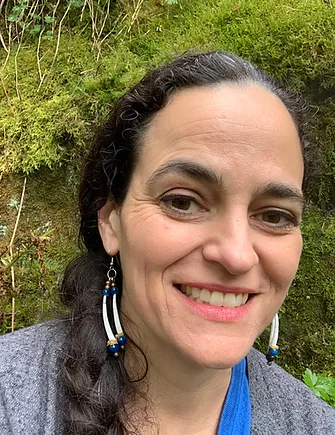
Team Presenter
Ellen Carrlee
Conservator, Alaska State Museum
Juneau, Alaska, USA
Ellen Carrlee has been working in Alaskan museums for twenty years and has been the conservator at the Alaska State Museum since 2006. She holds an M.A. in Art History and Art Conservation from New York University (2000) and a Ph.D. in Anthropology from the University of Alaska Fairbanks (2020). Her research interests include material culture made from plants and animals as well as collaborative projects that explore the networks of relationships among human and non-human agents.
Session: The Chilkat Dye Project

Poster Presenter
Yueh-Ting Chiu
MuSE Intern
The Metropolitan Museum of Art
Graduate Student
Biomaterials and Interface Tissue Engineering Laboratory
Department of Biomedical Engineering
Columbia University
New York, New York, USA
As a MuSe summer intern at the metropolitan museum of art, Yueh-Ting Chiu is currently working alongside with the department of scientific research on characterization of different emulsion tanning methods involving animal organs. In a collaboration with Columbia University, her responsibilities involves analysis of the mechanical properties and surface analysis of the material. They will also be looking in the proteomics and lipidomic fingerprints left behind from the different emulsion techniques.
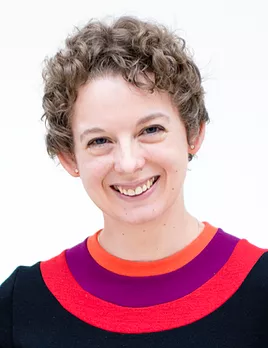
Participant
Elizabeth Cleland
Curator
European Sculpture and Decorative Arts
Metropolitan Museum of Art
New York City, NY, USA
At The Met since 2004, Elizabeth Cleland is curator of post-medieval European textiles. She has authored and co-authored numerous books and articles about historic European tapestries. She curated Relative Values: The Cost of Art in the Northern Renaissance (2017), co-curating Grand Design: Pieter Coecke van Aelst and Renaissance Tapestry (2014) and Art at the Tudor Courts (2022). She studied at the Courtauld Institute of Art, receiving her MA and PhD as a British Academy scholar.

Team Presenter
Matthew Collins
The GLOBE Institute
University of Copenhagen, Denmark
Matthew supports a team of postdoctoral and PhD students who are exploring the potential of parchment as a biomolecular archive. His background is almost as mixed as his research team, starting as a marine zoologist, followed by a Geology PhD at (Glasgow), postdoctoral positions in biochemistry and chemistry labs and a stint lecturing in environmental geochemistry before settling down as an archaeologist.
Session: ArcHives: Beeswax as a Biomolecular Archive (an exploratory investigation)
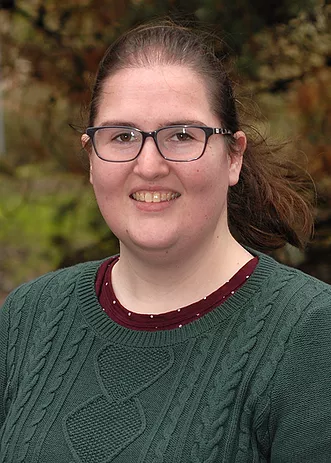
Poster Presenter
Laura Courto
Marie Skłodowska-Curie Early Stage Researcher (ESR) Fellow
PhD Student in Archaeology
University of Cambridge, UK
Laura Courto is currently part of a Marie Skłodowska-Curie doctoral training network aiming to bridge the gap between archaeology and marine biology. Her current responsibilities are to perform original research under academic supervision and participate in the activities of the SeaChanges network including meetings, training, workshops, conferences, public outreach, and periodic secondment placements.
Session: Scrimshaw: unlocking the cultural and biological archive of sea mammal art
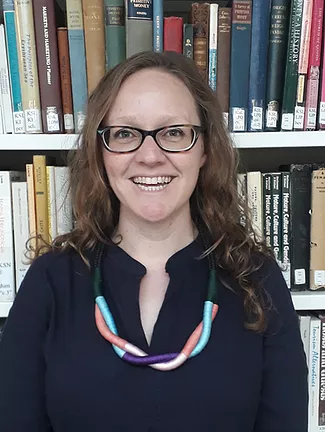
Poster Presenter
Ashley Coutu
Research Fellow
Pitt Rivers Museum
University of Oxford, UK
Ashley Coutu is currently a Research Fellow at the Pitt Rivers Museum, University of Oxford. Her background is as an archaeological scientist, and she primarily uses techniques and methods from biology and organic chemistry to understand archaeological materials. Her specialism is the use of stable isotope, ancient DNA, and proteomics analyses as applied to archaeological and museum collections of organic materials. She is particularly interested in method development in relation to the needs of museums for display and the care of objects in terms of their conservation. The geographical focus of her work is sub-Saharan Africa, and therefore most of her research is on the ivory trade, past and present, and the use of ivory as a raw material for crafting objects.
Poster: Life histories of ivory objects in museum collections
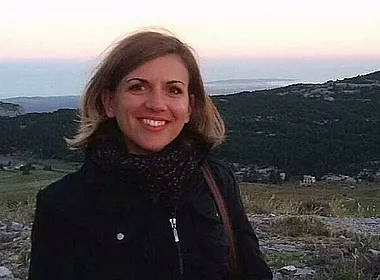
Poster Presenter
Annamaria Cucina
PhD Student
Chemical Sciences
University of Catania, Italy
Annamaria Cucina is a PhD student in Chemical Sciences, University of Catania working on Proteomics in Cultural Heritage. She works on the analysis of proteins and peptides in paintings, coatings but also archaeological remains via highsresolution mass spectrometry. This meeting could help me gain a moresinterdisciplinary vision, not only from a techniqual point of view, but also from a more historical-artistic point of view.
Poster: Proteomic analysis of samples from three Raphael Cartoons: Original material, repair or retouching?
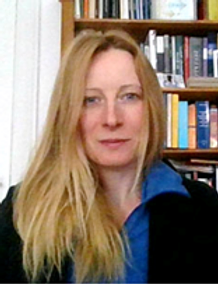
Partcipant
Elke Cwiertnia
Conservation Scientist
Rathgen-Forschungslabor (Rathgen Research Laboratory)
Staatliche Museen zu Berlin (Berlin State Museum)
Berlin, Germany
Elke Cwiertnia is a conservation scientist working at the Rathgen-Forschungslabor (Rathgen Research Laboratory) in Berlin. She is specialised in the scientific analysis of cultural heritage objects, its contextualisation and improving conservation treatments. She holds a PhD in analytical science (Newcastle Upon Tyne) and a diploma in art technology, conservation and restoration of cultural heritage (Dresden). Currently, she is working on projects investigating residues in Ancient Egyptian pottery and paint layers from the 19th century.
D
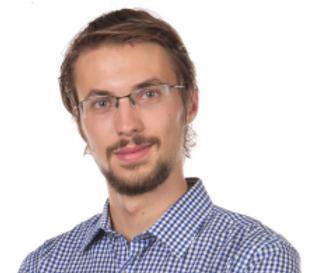
Poster Presenter
Jan Dekker
PhD Student
Leiden University, the Netherlands
Jan Dekker is a PhD student in the Marie Skłodowska-Curie ChemArch project at the University of York and the University of Copenhagen. His research focuses on the analysis of ancient proteins, in particular the study of proteins preserved in ancient food crusts. However, previous work also includes the use of proteins to taxonomically identify Mesolithic barbed tools and to study ancient health.
Poster: ZooMS identifications of human and cervid barbed points from Mesolithic Doggerland
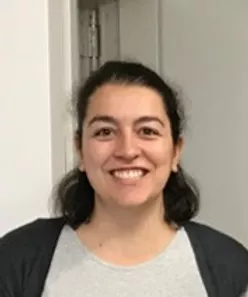
Team Presenter
Fabiana Di Gianvincenzo
PhD Student
TEMPERA Marie Skłodowska-Curie ETN
The GLOBE Institute
University of Copenhagen, Denmark
The presented project was part of Fabiana Di Gianvincenzo's PhD, during which she worked on the characterisation of proteinaceous materials in European paintings. Micro-samples removed from the artworks are processed to extract proteinaceous residues, and to identify such residues via tandem mass spectrometry-based proteomics. Her role in this project concerned the processing of the micro-samples, the analysis of the recorded data, and the interpretation of the results together with museum collaborators and sample providers.
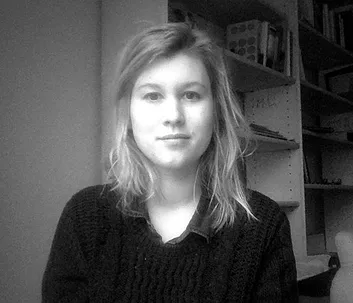
Participant
Sofie Dierickx
PhD Student
Ghent University
Ghent, Belgium
Sofie Dierickx graduated as wood conservator in 2018. She acquired a passion for ethnographical heritage through her internship at the Royal Museum for Central Africa in Tervuren and a traineeship at the Nationaal Museum voor Wereldculturen in the Netherlands. Currently she is working as a PhD student on the TOCOWO project (TOmography of COngolese Wooden Objects), exploring the possibilities of x-ray tomography as a non-invasive alternative for wood species identification of museum objects.

Team Presenter
Patrick Dietemann
Senior Researcher
Doerner Institute
Munich, Germany
Patrick Dietemann studied chemistry at the Swiss Federal Institute of Technology (ETH) Zurich, where he obtained a PhD in analytical chemistry with his thesis on the aging of natural resin varnishes on paintings. After three years at the Zentrallabor of the Bavarian State Office of Historic Monuments, he joined the Doerner Institut, Munich, in 2007, where he is responsible for the analysis of organic binders. His research interests are the identification of binding media of paintings and their degradation processes, but also includes the identification of organic materials on all kinds of objects of art and cultural heritage.
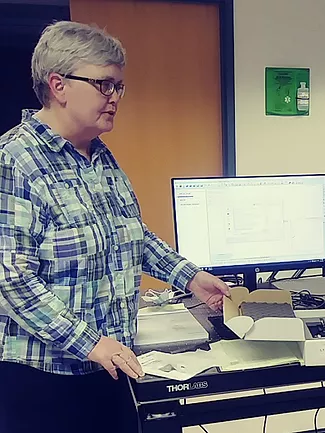
Participant
Kate Duffy
Research Scientist
Philadelphia Museum of Art
Philadelphia, PA, USA
Dr. Kate Duffy is the senior scientist in the conservation department of the Philadelphia Museum of Art. She received a degree in chemistry from Hood College, Frederick, MD, and completed her PhD at the University of Birmingham, UK, on the application of metabolomics to the study of archaeological finds.
F

Poster Presenter
Sarah Fiddyment
Postdoctoral Research Associate ERC
Beasts to Craft
Cambridge, UK
Dr Sarah Fiddyment received her BSc in Biochemistry from the University of Zaragoza (Spain) in 2006, having completed three years of medical school and two years specialization in Biochemistry.
Her MSc and subsequent PhD (awarded in 2011) were both completed at the same university, working in the field of proteomics in cardiovascular research.
She moved to the University of York in 2012 after being awarded a Marie Curie postdoctoral research fellowship to focus on the protein analysis of parchments throughout history. During this time she developed a non-invasive sampling technique that has allowed her unprecedented access to thousands of parchment documents, helping to establish the emerging field of biocodicology. She was subsequently awarded a British Academy Postdoctoral Fellow continuing her biomolecular analysis of parchment through history.
She is currently a Postdoctoral Research Associate on the Beasts 2 Craft ERC project at the McDonald Institute for Archaeological Research (University of Cambridge).
Poster: A labour of love: Biocodicological analysis of a medieval birthing girdle

Poster Presenter
Cecilia Flocco
Scientist
Leibniz Institute
DSMZ-German Collection of Microorganisms and Cell Cultures
Department of Microbial Ecology and Diversity Reserach
Braunschweig, Germany
Cecilia G. Flocco is an interdisciplinary scientist and technology consultant working at the intersection of life and environmental sciences with cultural heritage research. She is currently based in Braunschweig, Germany, conducting research at the Leibniz-Institute DSMZ-German Collection of Microorganisms and Cell Cultures GmbH, one of the largest biological resources centers worldwide. Her current research interests encompass understanding the dynamics of microbial communities in extreme environments and niche habitats, such as polar regions (Antarctica) and cultural legacy objects, and advancing interdisciplinary approaches to cultural heritage research.
Posters:
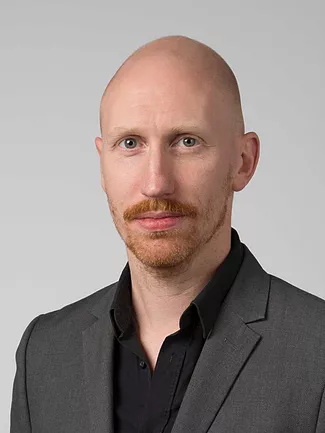
Participant
Manu Frederickx
Associate Conservator
Metropolitan Museum of Art
New York City, NY, USA
Manu Frederickx is an Associate Conservator at The Met’s Objects Conservation Department, where he is responsible for the conservation and technical study of musical instruments. Previously he was a lecturer and head of the Musical Instrument Making program at University College Ghent and worked as a conservator at the Musical Instrument Museum in Brussels. He is currently conducting a PhD study at Ghent University, focusing on the construction of virginals in 16th- and 17th-century Antwerp.
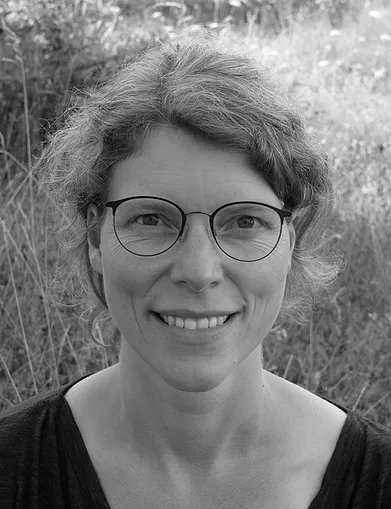
Poster Presenter
Beate Fuecker
Project Lead
Institute of Art Technology and Conservation (IKK)
Germanisches Nationalmuseum
Nuremberg
Beate Fücker is currently head of a research project in art technology of the late medieval panel paintings from southern Germany that are part of the collection of the Germanisches Nationalmuseum, Nuremberg. They have been investigating panel paintings for the last 8 years, so far resulting in two comprehensive collection catalogues. The ongoing serial examination of all panels follows the exact same scheme and involves radiography, infrared imaging, UV-fluorescence-photography, X-ray fluorescence analysis, wood species analysis, and microscopic examination as well as sampling and dendrochronology in selected cases.
G

Team Presenter
Susan Gagliardi
Associate Professor and Director of Graduate Studies
Emory University Art History Department
Atlanta, Georgia, USA
Susan E. Gagliardi is an associate professor of art history at Emory University in Atlanta, Georgia. She is also a core faculty member of Emory’s Institute of African Studies, and currently serves as director of graduate studies for Emory’s PhD program in art history. Her research and teaching focuses on the arts of Africa. She has spent a total of more than twenty-one months in Burkina Faso, where she has worked with power association leaders and other community members to study the organizations and their arts. She has also conducted archival and museum-based research in Africa, Europe, and North America.

Poster Presenter
Francesca Galluzzi
Postdoctoral Researcher
University of Bordeaux
Bordeaux, France
Dr Francesca Galluzzi is a postdoctoral Fellow at the University of Bordeaux. Her BSc and MSc degree were in Science for Cultural Heritage analysis (University of Venice and Bologna). She earned her PhD in Chemical Science from the University of Bordeaux in 2021. The doctoral project was part of the Marie Skłodowska-Curie European Training Network TEMPERA, and it was focused on the development of new methodologies based on mass spectrometry for the analysis of proteinaceous compounds in different artistic materials. Her research interests include the characterisation of proteins collected at the trace level (following the bottom up and top-down approaches) and the investigation of chemical and structural modifications induced in proteins by processes of ageing and degradation (particularly cross-linking formations).

Participant
Eugenia Geddes Da Filicaia
PhD Student
University of Bristol
Bristol, England
After studying first chemistry and then conservation of wall painting, and working as a conservator and lecturer, Eugenia Geddes da Filicaia is currently undertaking a PhD under the supervision of David Peggie and Richard Evershed. Her project, a collaboration between the scientific department at the National Gallery and the chemistry department at the University of Bristol, aims to apply advanced mass spectrometry techniques to the study of organic materials in art to aid the conservation of paintings.
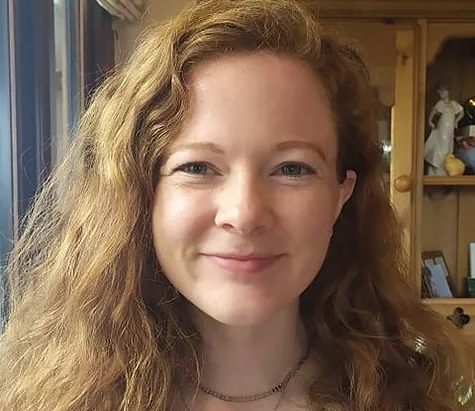
Poster Presenter
Catherine Gilbert
PhD Student
University of Bordeaux
Bordeaux, France
Catherine graduated with a bachelor’s in Liberal Arts and Sciences from the Maastricht Science Programme (Maastricht University) in 2018, with a specialisation in Chemistry. After this, she enrolled in the joint Chemistry master’s programme at the Universiteit van Amsterdam and the Vrije Universiteit, specialising in Analytical Sciences. Through TI-COAST, she performed her master’s thesis research at Shell Technology Centre, Amsterdam, where she helped to establish the use of SFC-MS as an analysis method. Catherine joined the S2MB (Mass Spectrometry of Biological Macromolecules) team of the UMR CNRS 5248 Institute of Chemistry & Biology of Membranes & Nano-objects to perform her PhD under the supervision of Professor Caroline Tokarski. She will work within the Marie Skłodowska-Curie European Training Network PUSHH and will focus on the use of mass spectrometry applied to the field of palaeoproteomics.
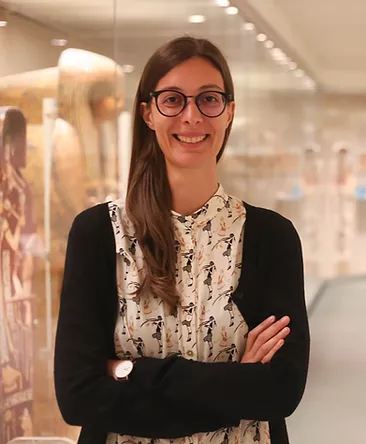
Team Presenter
Clara Granzotto
Assistant Conservation Scientist
Scientific Research, Department of Conservation and Science
The Art Institute of Chicago
Chicago, Illinois, USA
Clara Granzotto is Assistant Conservation Scientist in the Conservation and Science department at the Art Institute of Chicago. She received her Ph.D. in chemical sciences from the University of Venice, Italy, and the University of Lille, France. Clara conducted post-doctoral research at the Center for Scientific Studies in the Arts at Northwestern University in Evanston (IL), at the scientific department of The Metropolitan Museum of Art in New York and at the University of Copenhagen, Denmark. She specializes in the analysis of traditional binding media in works of art by mass spectrometry, with a focus on polysaccharides and proteins, to understand artists’ technique, artworks appearance and condition.
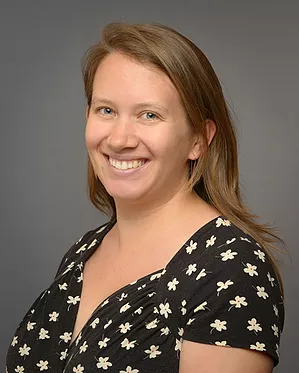
Team Presenter
Rosie Ann Grayburn
Associate Scientist and Laboratory Manager
Department of Conservation,
Winterthur Museum, Garden and Library
Winterthur, Delaware, USA
Rosie Grayburn (she/her) holds a dual appointment as Associate Scientist and Manager for the Scientific Research and Analytical lab at Winterthur Museum, Garden, and Library, and Affiliated Associate Professor in the Winterthur/University of Delaware Program in Art Conservation, where she teaches conservation science and analytical methodologies to graduate fellows in art conservation. Her current research projects skew inorganic: from an investigation into toxic pigmented bookcloth, to the optimization and study of treatments for silver and silverplate. She was previously a postdoctoral fellow in Conservation Science at the Getty Conservation Institute in Los Angeles, and holds a joint PhD in Physics and Analytical Chemistry from Universiteit Gent and the University of Warwick.
H
Pamela Hatchfield
Head of Objects Conservation (emertis)
Museum of Fine Arts, Boston
Boston, MA, USA
Pamela Hatchfield serves as Project Coordinator for Held in Trust, a collaboration between the National Endowment for Humanities and the Foundation for Advancement in Conservation, evaluating preservation and conservation needs in the United States. She is Emerita Head of Objects Conservation at the Museum of Fine Arts, Boston, a Fellow of the American Institute for Conservation of Historic and Artistic Works, the International Institute for Conservation and of the American Academy in Rome.
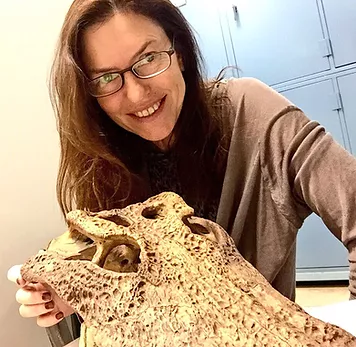
Poster Presenter
Evon Hekkala
Assistant Professor
Biological Sciences
Fordham University
New York, New Yorl, USA
Evon Hekkala uses ancient and archival genomic methods to identify biological materials and to track their use and meaning at various points in history. Most recently, she is working with natural history collections to uplift Indigenous taxonomies and knowledge systems. Her current research is primarily focused on analyzing genomic data from archival and ancient biomaterials in combination with historical documentary resources to better understand species specific responses to anthropogenically and naturally induced environmental change. She works with communities to explore both formal and colloquial natural histories to decolonize our understanding of sources and meaning of the cultural heritage and natural history objects in museums.
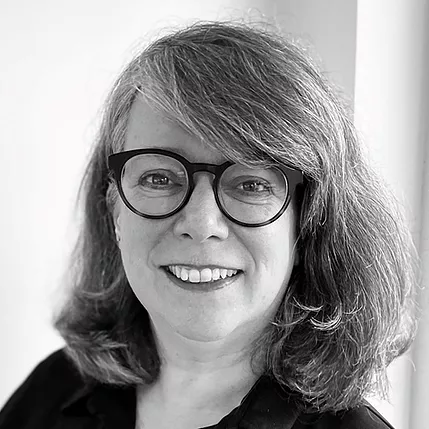
Steering Committee
Erma Hermens
Professor in Studio Practice and Technical Art History
Rijksmuseum
Amsterdam, The Netherlands
Erma Hermens is the Rijksmuseum Professor in studio practice and technical art history at the University of Amsterdam and the Rijksmuseum, Department of Conservation of Science, where she works with interdisciplinary teams, liaising between curators, conservators and scientists, combining art historical and contextual research of objects, their composite materials, and methods of making, with scientific analytical data. She is from March 2021-March 22, Visiting Porfessor at the Venice Centre for Digital and Public Humanities, Ca ‘Foscari University of Venice. Present projects CT-scanning for Art: from Images to Patterns (IMPACT4Art); Imaging, Identification and interpretation of Glass in Paint (I3Glassp); Down to the Ground: Colored grounds in Netherlandish 16th and 17th-century painting. She is presently writing a review report of the field of Technical Art History commissioned by the Samuel H. Kress Foundation.
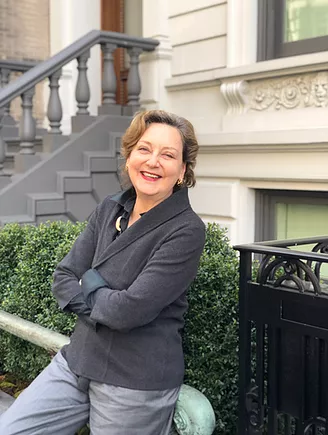
Co-Organizer
Margaret Holben Ellis
Eugene Thaw Professor Emerita
Institute of Fine Arts
New York University
New York, New York, USA
Professor Ellis teaches the conservation treatment of prints and drawings and technical connoisseurship for art historians. She served as founding Director of the Thaw Conservation Center at the Morgan Library & Museum until January 2017. She is a Fellow and current President of the American Institute for Conservation of Historic and Artistic Works (AIC), a Fellow of the International Institute for Conservation of Historic and Artistic Works (IIC), a Fellow of the American Academy in Rome, and an Accredited Conservator/Restorer of the Institute of Conservation (ICON). She was Editor for Philosophical and Historical Issues in the Conservation of Works of Art on Paper (2014; Getty Conservation Institute); the 2nd edition of her book, The Care of Prints and Drawings appeared in 2017.
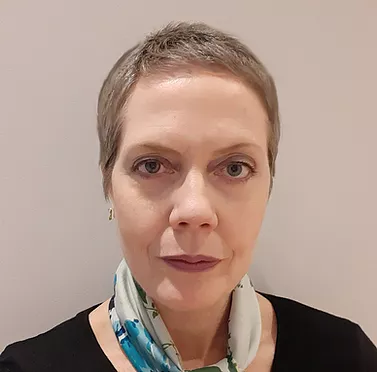
Participant
Stephanie Hornbeck
McCarter Chief Conservator
Department of Anthropology
Field Museum
Chicago, IL, USA
Stephanie E. Hornbeck is McCarter Chief Conservator, Anthropology Collections, Field Museum. From 2010-2017 she was Director of Conservation, Caryatid Conservation Services, her private practice. From 2010-2012, as Chief Conservator, Smithsonian Haiti Cultural Recovery Project, she directed conservation recovery of cultural patrimony damaged in the 2010 earthquake. From 1998-2009, she was Conservator, National Museum of African Art. Stephanie’s research involves identification and regulation of ivory and intersections of conservation practice for indigenous material culture and contemporary art.
J
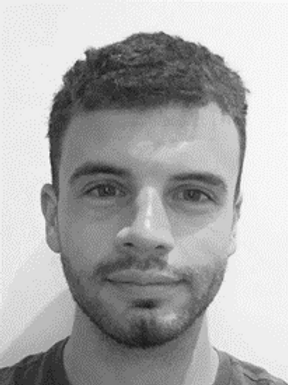
Team Presenter
Samuel Johns
PhD Student
University of Bristol
Bristol, UK
Samuel is a PhD candidate within the Organic Geochemistry Unit at the University of Bristol. His research seeks to address hypotheses surrounding diachronic and geographical changes in the molecular composition of parchment manuscripts and wax seals by GC/MS and HT-GC/MS; determine the isotopic composition of lipids within parchment and wax seals by GC-TC-IRMS and validate novel compound-specific approaches for radiocarbon dating.
Session: ArcHives: Beeswax as a Biomolecular Archive (an exploratory investigation)
K
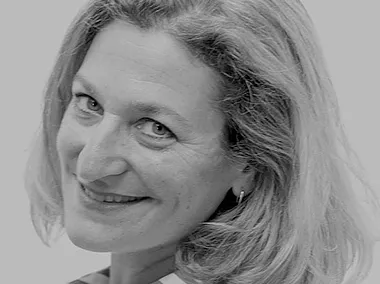
Participant
Emily Kaplan
Conservator
Acting Head of Conservation
National Museum of the American Indian
Washington, DC, USA
Emily Kaplan has been an objects conservator at the National Museum of the American Indian since 1994; she currently serves as Acting Head of Conservation. Her research interests include materiality and provenance studies of historic and archaeological museum collections. Emily is committed to collaborative practice in conservation through partnerships with Indigenous communities and artists. She works closely with her colleagues to manage the NMAI Conservation Andrew W. Mellon Fellowship program.
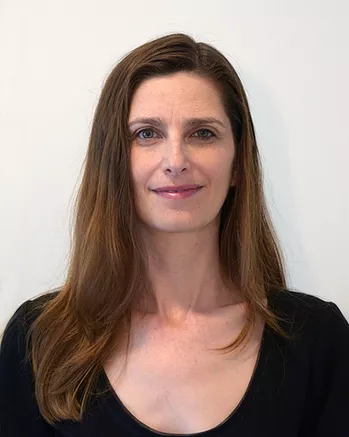
Team Presenter
Lara Kaplan
Objects Conservator and Affiliated Assistant Professor
Winterthur Museum, Garden & Library
Winterthur/University of Delaware Program in Art Conservation
Winterthur, Delaware, USA
Lara Kaplan is an objects conservator at Winterthur Museum and an affiliated assistant professor at the Winterthur/University of Delaware Program in Art Conservation (WUDPAC). Since 2017, she has led the organic objects portion of WUDPAC’s first-year conservation curriculum and beginning in 2019 came on board as a full-time objects conservator at Winterthur Museum. She earned an M.S. in art conservation from WUDPAC in 2003; interned at the Sheldon Jackson Museum, the Arizona State Museum, and the National Park Service Western Archeological and Conservation Center; and held a post-graduate Mellon Fellowship at the Smithsonian National Museum of the American Indian. Prior to working at Winterthur, she ran a private conservation practice in Baltimore, Maryland. Ms. Kaplan’s research interests include organic materials, especially skin and leather, the treatment of plastics, and ethical considerations for non-traditional collections.

Team Presenter
Tuuli Kasso
PhD Student
Beast2Craft and ArcHives
University of Copenhagen
Copenhagen, Denmark
Session: ArcHives: Beeswax as a Biomolecular Archive (an exploratory investigation)
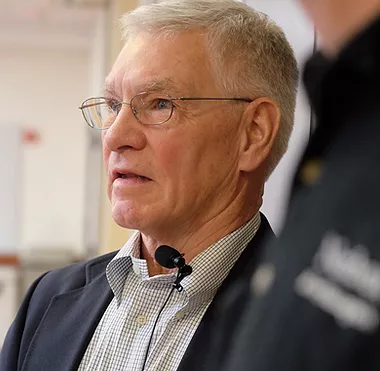
Participant
Dan Kirby
Conservation Scientist
Private Practice
Museum of Fine Arts, Boston
Boston, MA, USA
After careers as an analytical chemist in semiconductor electronics, pharmaceuticals and academic research, Dan redirected his interests to conservation. He currently works in private practice and as a volunteer in the Scientific Research Lab at the MFA, Boston and as a Visiting Scholar at Northeastern University. Dan specializes in applications of mass spectrometry in art and cultural heritage, with a particular interest in protein identification.
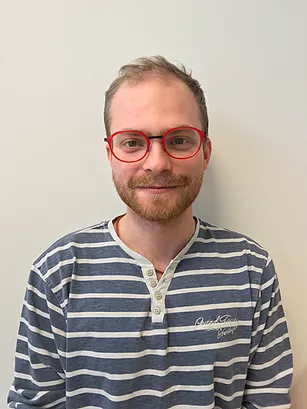
Poster Presenter
Vaclav Krupicka
PhD Student
University of Bordeaux
Bordeaux, France
Vaclav completed his undergraduate and postgraduate studies at University of Warwick as part of integrated masters course, MChem. He performed his master thesis research on ultra-high mass resolution mass spectrometry group. The master thesis was concentrated around optimising fragmentation techniques for carbonic anhydrase using a 12T FT-ICR Mass Spectrometer. Vaclav joined the S2MB (Mass Spectrometry of Biological Macromolecules) team of the UMR CNRS 5248 Institute of Chemistry & Biology of Membranes & Nano-objects to complete his PhD studies under supervision of prof. Caroline Tokarski. Under the grant from CNRS Vaclav will work as the part of the ARCHE lab to study the applications of Top-down mass spectrometry in study of ancient proteins from cultural heritage samples.
L

Team Presenter
Tami Lasseter Clare
Associate Professor
Portland State University
Portland, Oregon, USA
Tami Lasseter Clare is an Associate Professor of Chemistry at Portland State University where she teaches a range of undergraduate and graduate courses and is the Director of the Pacific Northwest Conservation Science Consortium, in partnership with five major museums in the region. With her undergraduate, graduate and postdoctoral trainees, her research efforts center on developing new materials and diagnostic tools to prevent and understand the degradation of material cultural heritage, such as artwork and ethnographic materials. Her prior work experience includes post-doctoral work at the Philadelphia Museum of Art and as an instructor at the University of Pennsylvania in the Historic Preservation program. She earned her Ph.D. in chemistry from the University of Wisconsin-Madison in 2005.
Session: The Chilkat Dye Project
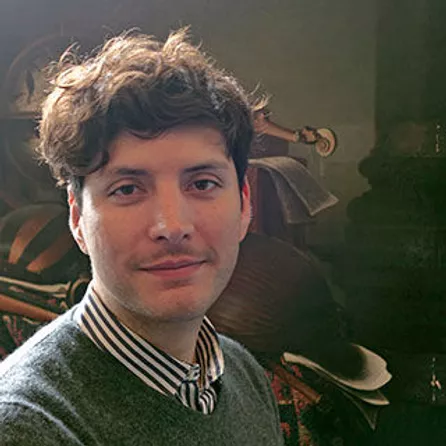
Team Presenter
José Lazarte Luna
Assistant Conservator
The Metropolitan Museum of Art
New York, New York, USA
José Lazarte works primarily with European paintings of the 16th to the 18th centuries and American paintings, including works from colonial Latin America. José received a BA in Art Conservation (with a minor in studio arts) from the University of Delaware and an MA in Science from the Winterthur/University of Delaware Graduate Program in Art Conservation in 2016.

Team Presenter
Élodie Lévêque
Senior Book Conservator
National Library of Ireland
Dublin, Ireland
Élodie Lévêque graduated with a Master's in Book Conservation from the Sorbonne (Paris) in 2010 and completed a PhD in Medieval History in 2020 (Paris X University). For the past 5 years, her main focus has been on medieval bindings from the Clairvaux Collection of manuscripts.
She is a Senior conservator in the National Library of Ireland. She previously worked at Trinity College and at the Institut de Recherche et d’Histoire des Textes (IRHT/CNRS) in Paris as a research engineer. Prior to this, Elodie was a Manuscript Conservator at Montpellier University Library. She also worked for the National Library of Ireland (2010-2016) as a project conservator and a Heritage Council fellow, conserving the Library’s manuscripts collections, incl. the Gaelic and the Ormond Deeds Collections.
She worked as a fellow at the New York Academy of Medicine (Gladys Brooke Book and Paper fellowship, 2010), and as a post-graduate intern at both the Morgan Library and Museum and the San Francisco Museum of Modern Art (2009-2010).
Élodie is the author of numerous publications about manuscript conservation, in international peer-reviewed scientific journals such as the Journal of Paper Conservation; in addition, she is part of the seminar advisory board for Care and Conservation of Manuscripts (University of Copenhagen). She is a member of the International Council of Museums (Committee for Conservation), and of the International Association of Book and Paper Conservators (IADA).

Participant
Sara Levin
Assistant Conservator
Department of Objects Conservation
The Metropolitan Museum of Art
New York, NY, USA
Sara Levin joined The Met in 2017 as a project conservator for the renovation of the British Galleries. She is now dedicated to the care and study of indigenous works of art from Africa and Oceania. She received an MS in art conservation from the University of Delaware/Winterthur Museum, with a focus on archaeological artifacts. She has previously held positions at Abigail Mack Art Conservation, the Brooklyn Museum, Getty Villa, and University of Pennsylvania Museum.
M
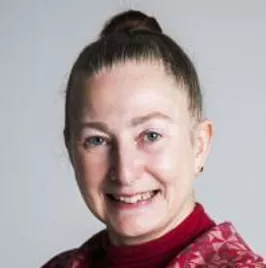
Poster Presenter
Jane Malcolm-Davies
Associate Professor of Textile Analysis
The GLOBE Institute
University of Copenhagen
Copenhagen, Denmark
Jane Malcolm-Davies is an associate professor of textile analysis at the University of Copenhagen where she is part of a biocodicology team studying parchment (see Beasts2Craft online), although her specialism is in the interdisciplinary study of non-woven fabrics. She is the leader of ‘Knitting in Early Modern Europe’ (see kemeresearch.com) – a project which gathers evidence for the development of knitting into an online collection with the aim of encouraging the scientific study of it via remote research tools. She is a co-editor of the ‘Archaeological Textiles Review’ and on the board of the ‘Journal of Dress History’. She also co-directs The Tudor Tailor, a company which researches and publishes resources to encourage the accurate reconstruction of historic dress. She has a background in science journalism and entrepreneurship having completed her PhD in my 30s while running my own cultural heritage company. She is particularly interested in applying natural science techniques to textiles in collaborative projects which foster understanding across the art/craft/ science/sectors. She led the ‘Analytical Techniques for Organic Materials Studies’ (ATOMS) seminar programme in Copenhagen with Dr Luise Ørsted Brandt (who uses DNA and proteomic analyses to research textiles). They conducted interviews with leading scientists to explore how their expertise could be applied to the investigation of textiles and other organic materials. They aim to build on the ATOMS programme to help foster a collaborative framework for art, craft and natural science specialists. She also ran a series of experimental history workshops looking at the impact of fulling on Early Modern textiles as part of my Marie Sklodowska Curie Fellowship in Denmark.
Poster: Minimally invasive analysis: Fact or fantasy? The challenge of 14C dating Early Modern material
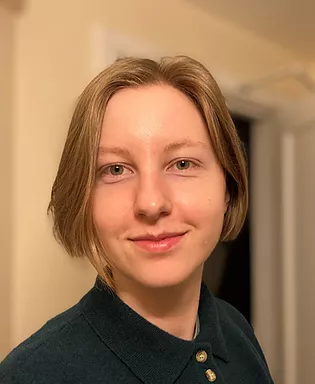
Poster Presenter
Billie Males
MPhil Student
Department of Archaeology
University of Cambridge
Cambridge, UK
Billie Males is a MPhil student at the University of Cambridge. Her current research uses proteomics to investigate the materiality of medieval parchment manuscripts. While studying at the University of Chicago, she collaborated with the Center for Scientific Studies in the Arts (NU/AIC) to characterize pigments using spectral microscopy and other analytical techniques.
Poster: Counting Sheep: Proteomic Analysis (eZooMS) of Legal Documents from Medieval East Anglia
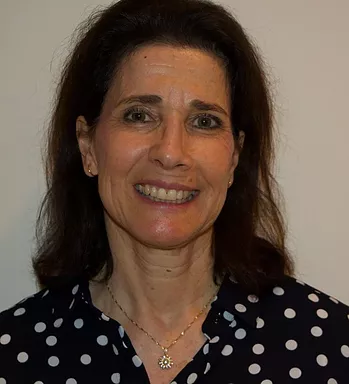
Participant
Marguerite Mangin
Senior Advisor
The Richard Lounsbery Foundation
New York, NY, USA
Marguerite Mangin advises the Richard Lounsbery Foundation on both scientific projects and French-American efforts. Marguerite is also the Secretary and Project Coordinator for the Leonardo da Vinci DNA Project, overseeing an international group of scientists, anthropologists and art historians. Her lifelong passion for scientific research and education began in Paris, where she received her Ph.D. in Molecular Biology. She then spent 10 years at Yale University where she purified a new peptide hormone implicated in bone cancer, before joining The Rockefeller University as administrator.
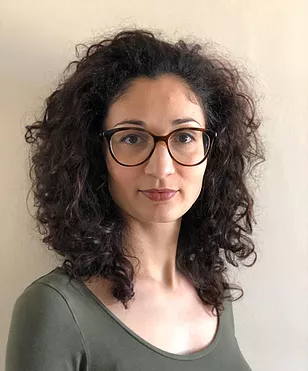
Participant
Letizia Marcattili
Painting Conservator
National Gallery of Ireland
Dublin, Ireland
Letizia Marcattili is a paintings and wooden artefacts conservator. After finishing her conservation degree at Istituto di Restauro delle Marche, Italy, in 2017, she started to gain experience working in private studios and public institutions, treating a variety of artworks spanning paintings on canvas and panel, frames and wooden sculptures. Her research and publication interests are related to the conservation treatments she carried out, and a selection of her papers have been published in conference proceedings.

Team Presenter
Christopher Mason
Professor of Genomics, Physiology, and Biophysics
Weill Cornell Medicine
Director of the WorldQuant Initiative for Quantitative Prediction
New York, New York, USA
The Mason laboratory develops and deploys new biochemical and computational methods in functional genomics to elucidate the genetic basis of human disease and physiology. We create and deploy novel techniques in genomics and algorithms for: tumor evolution, genome evolution, DNA and RNA modifications, and genome/epigenome engineering.
Session: Illuminating Genetic Mysteries of the Dead Sea Scrolls
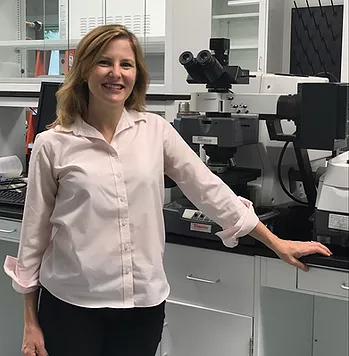
Participant
Catherine Matsen
Scientist
Winterthur Museum, Garden and Library
University of Delaware
Winterthur, DE
Catherine Matsen is a conservation scientist at Winterthur Museum’s Scientific Research and Analysis Laboratory (SRAL). She performs analysis on all types of decorative arts in the museum collection using a variety of spectroscopic and chromatographic instrumental techniques. Catherine teaches in the Winterthur/University of Delaware Program in Art Conservation (WUDPAC), and guest lectures about the role of materials analysis in material culture research to students in the Winterthur Program in America Material Culture (WPAMC).
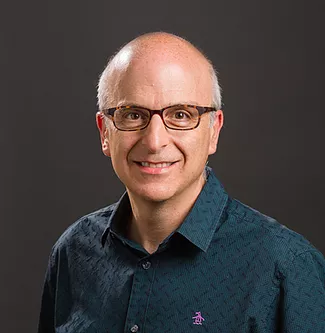
Team Presenter
Andrew Miranker
Professor of Molecular Biophysics and Biochemistry
Professor of Chemical and Environmental Engineering
Yale
New Haven, Connecticut, USA
Andrew Miranker is a full professor with 25-years of experience running a federally funded biomedical basic research lab. He is also an active, hands-on experimentalist with personal projects and lab-based undergraduate teaching of his own design in DNA engineering. In 2013, his undergraduate course, two years in the making, was the first of its kind at Yale. This was an elective biology lab, jointly taught with conservators and Yale’s History of Art Department. Since that time, his contacts with conservators and curators at Yale’s museums, particularly the Yale University Art Gallery, has only increased. In 2017, he chose to spend his sabbatical in the laboratory of team member Aniko Bezur, 10 miles from his own lab, in the Yale Institute for the Preservation of Cultural Heritage. It was this daily contact with the Bezur lab while on his sabbatical that cemented his desire to contribute scholarship to this field.
Session: Extracting Stories from DNA preserved by 19th century Americana

Participant
Noam Mizhrahi
Senior Lecturer
Hebrew University of Jerusalem
Jerusalem, Israel
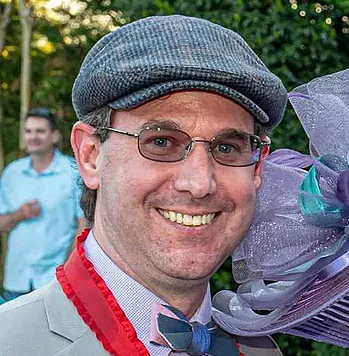
Participant
Eric Monroe
Head, Scientific Laborary Section
Preservation Research Testing Division
Library of Congress
Washington, DC, USA
Dr. Eric Monroe is the Head of the Scientific Laboratory Section in the Preservation Research and Testing Division at the Library of Congress. He received his PhD from the University of Illinois in Analytical Chemistry. Prior to coming to the Library of Congress, his research career centered on the application of analytical chemistry techniques and methods to neuroscience, virology, and materials science in both academic and industrial settings.

Participant
Patricia Raquel Moreira
Assistant Professor
School of Arts
Portuguese Catholic University
Lisbon, Portugal
Patrícia Moreira holds a holds a PhD in Biotechnology by Universidade Católica Portuguesa (UCP). She is an Assistant Professor at the School of Arts, member of Center for Research in Science and Technology of the Arts (CITAR) and coordinates the CITAR's Focus Area of Heritage, Conservation and Restoration in UCP. She is interested in biotechnology and nanotechnology innovation for Cultural Heritage with emphasis on biodeterioration, sustainability, circular economy, citizen science and green conservation.
N
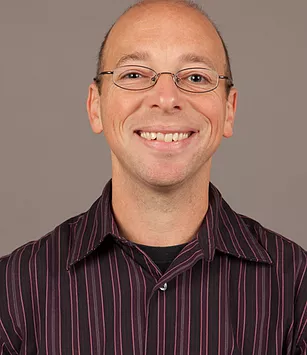
Participant
Asher Newsome
Research Physical Scientist
Smithsonian's Museum Conservation Institute
Suitland, Maryland, USA
G. Asher Newsome received his doctorate in Analytical Chemistry from the University of North Carolina-Chapel Hill in 2009, where he designed new instrumentation and methods for ion trap mass spectrometry. Since joining the Smithsonian Museum Conservation Institute in 2017, he has been particularly focused on adapting ambient ionization methods to cultural heritage analysis. His research places special consideration on minimizing sample damage and analyzing objects too physically large for standard methods.
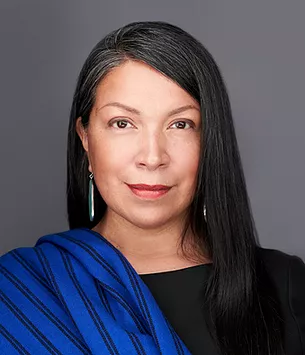
Invited Speaker
Patricia Marroquin Norby
Associate Curator of Native American Art
The American Wing
The Metropolitan Museum of Art
New York, New York, USA
Patricia Marroquin Norby (Purépecha) oversees the American Wing’s Native American art collection. An award-winning scholar and museum leader, she previously served as Senior Executive and Assistant Director of the Smithsonian’s National Museum of the American Indian-New York and as Director of the D’Arcy McNickle Center for American Indian and Indigenous Studies at the Newberry in Chicago. Her forthcoming book, Water, Bones, and Bombs examines 20th-century American Indian art and environmental disputes in northern New Mexico. She co-edited “Aesthetic Violence: Art and Indigenous Ways of Knowing,” American Indian Culture and Research Journal (2015). She earned her PhD at the University of Minnesota-Twin Cities.
P
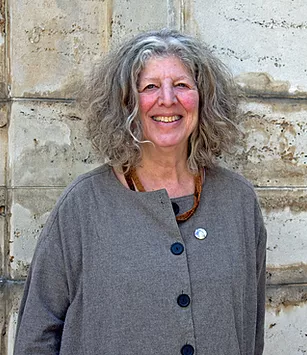
Participant
Ellen Pearlstein
Professor
The American Wing
UCLA/Getty Program in the Conservation of Cultural HeritageNew York, Los Angeles, CA, USA
Ellen Pearlstein is a professor of Cultural Heritage Conservation at UCLA/Getty. She incorporates Indigenous instruction into graduate conservation education. Ellen is Director of the Andrew W. Mellon Opportunity for Diversity in Conservation, a Keck Prize awardee, and recent recipient of a Rome Prize. She is completing the upcoming Conservation and Stewardship of Indigenous Collections: Changes and Transformations, in the GCI’s Readings in Conservation series.
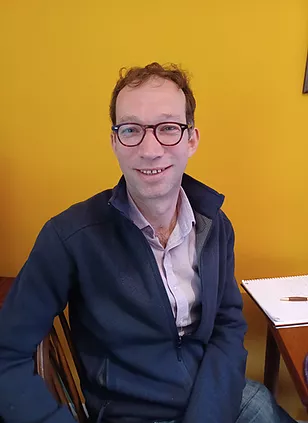
Participant
David Peggie
Senior Scientist
The National Gallery
London, UK
David obtained a Masters degree in Chemistry at The University of Edinburgh (2002) and then a PhD (2006) for research into the identification of dyes on historical textiles (in collaboration with the National Museum of Scotland). He joined the scientific department at the National Gallery, London, where he is now a Senior Scientist, using a variety of chromatographic and spectroscopic techniques for the characterisation of materials in support of conservation treatments and for the understanding of painting technique.
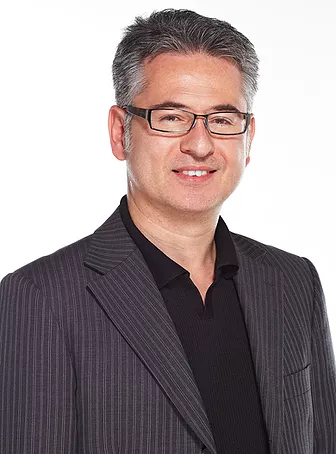
Steering Committee
Constantine Petridis
Chair
Department of Arts of Africa and the Americas
Curator of African Art
The Art Institute of Chicago
Chicago, Illinois, USA
Constantine (Costa) Petridis has served as chair and curator of Arts of Africa at the Art Institute of Chicago since November 2016. A corresponding member of the Royal Academy for Overseas Sciences, he earned his PhD in art history from Ghent University in his native Belgium. Prior to coming to Chicago, he held research, teaching, and curatorial positions at the Fund for Scientific Research - Flanders, the Metropolitan Museum of Art, Case Western Reserve University, the Cleveland Museum of Art, the Art Gallery of Ontario, and the Indianapolis Museum of Art. The author of several journal articles, book chapters, exhibition catalogues, and monographs, his latest publications include the book Luluwa: Central African Art Between Heaven and Earth (2018) and the edited volume Speaking of Objects: African Art at the Art Institute of Chicago (2020).
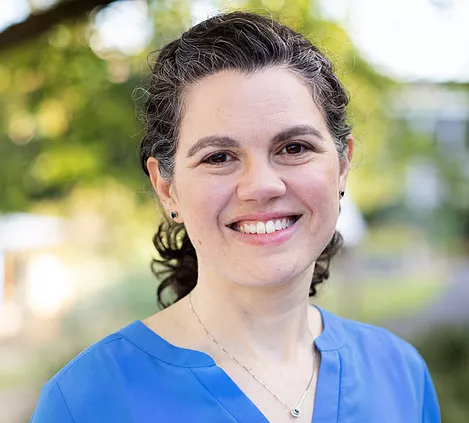
Poster Presenter
Rachel Popelka-Filcoff
Rock Art Australia Minderoo Chair in Archaeological Science
School of Earth Sciences, Faculty of Science
University of Melbourne
Melbourne, Victoria, Australia
Professor Rachel Popelka-Filcoff is the Rock Art Australia Minderoo Chair in Archaeological Science in the School of Geography, Earth and Atmospheric Sciences at the University of Melbourne, where she leads archaeological science initiatives. Her laboratory integrates advanced characterisation, spectroscopic and statistical-driven approaches, in the areas of archaeological science and cultural heritage chemistry. Her research is to the first comprehensive integrative characterisation of Australian natural mineral pigments on cultural heritage materials by several analytical methods to answer questions about provenance and composition. Rachel holds a PhD in Chemistry from the University of Missouri as a National Science Foundation Research Fellow and completed a National Research Council postdoc at the National Institute of Standards and Technology (NIST). From 2009-2020, she was at Flinders University in Adelaide, including 2010-2016 where she was an AINSE Senior Research Fellow. Rachel is on the editorial board of Journal of Archaeological Science and is a Fellow of the Royal Australian Chemical Institute. She has had her research profiled in several scientific and general media outlets, radio and television interviews.
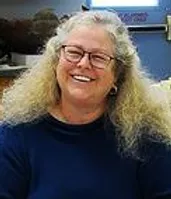
Participant
Marilen Pool
Senior Project Conservator
Arizona State Museum
Tuscon, AZ, USA
Marilen Pool is an objects conservator specializing in ethnographic and archaeological artifacts. She is the Senior Project Conservator at the Arizona State Museum and has worked on numerous collections projects there since 1997. Marilen also has a private conservation practice, Sonoran Art Conservation Services, in Tucson. She is currently a Doctoral Candidate at the University of Arizona in the department of Arid Land Resource Sciences. She is a Fellow of the American Institute for Conservation.
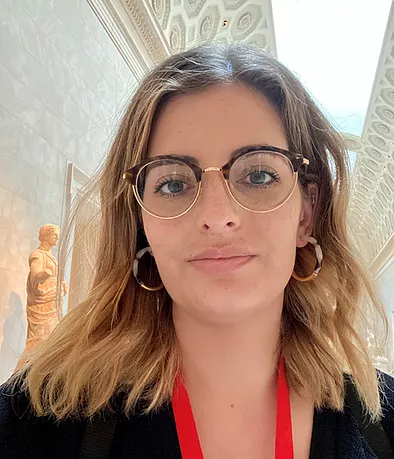
Team Presenter
Aleksandra Popowich
Research Associate
Department of Scientific Research
The Metropolitan Museum of Art
New York, New York, USA
Aleks Popowich has been at The Met since 2020 where she studies the many uses of proteins and lipids in works of art using mass spectrometry. Previously, she was a postdoctoral fellow at the Smithsonian’s Museum Conservation Institute. She holds a PhD in chemistry from the University of Alberta, where she studied the interactions of carcinogenic arsenic compounds with proteins using mass spectrometry and immunoassays.
R
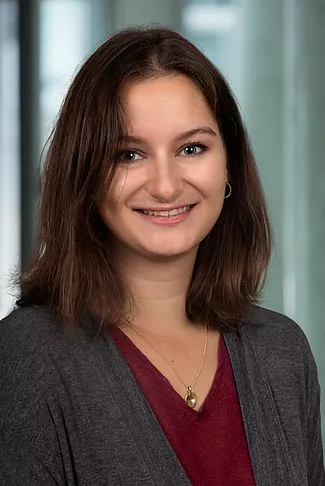
Team Presenter
Ophélie Ranquet
PhD Student
Karlsruhe Institute of Technology (KIT)
Institute of Mechanical Process Engineering and Mechanics
Applied Mechanics Group
Karlsruhe , Germany
Ophélie Ranquet is a PhD Student at the KIT in Germany, at the Institute of Mechanical Process Engineering and Mechanics. She completed her studies in Chemistry and Chemical Engineering in France at the ENSCL (École Nationale Supérieure de Chimie de Lille) and at the ECPM (University of Strasbourg). Her PhD project, focused on a multi-analytical approach, is held in collaboration with Ilaria Bonaduce and Celia Duce (University of Pisa), Norbert Willenbacher (KIT) and Patrick Dietemann (Doerner Institute). She investigates the role of addition of egg yolk in linseed oil-based paints and tempera paints by using tools and technologies from different fields: rheology, physical and analytical chemistry.
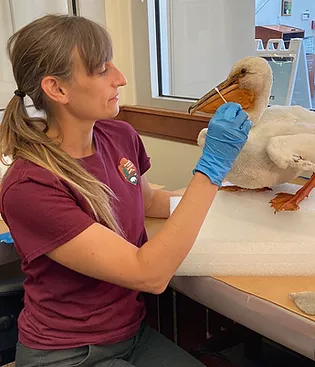
Participant
Fran Ritchie
Conservator
Harper's Ferry Center
National Park Service
Harper's Ferry, WV, USA
Fran Ritchie is a conservator of objects at the Harpers Ferry Center of the National Park Service, a center that supports the preservation and conservation of park collections across all units. With a background working on organic materials in museums, Fran enjoys immersing herself in the natural world – while learning about and treating “dead stuff,” as well as observing living ecosystems.

Participant
Corina Rogge
Research Scientist
Museum of Fine Arts, Houston
Houston, TX, USA
Corina (Cory) Rogge is the Andrew W. Mellon Research Scientist at the Museum of Fine Arts, Houston and the Menil Collection. She earned a B.A. from Bryn Mawr College and a Ph.D from Yale University. She is the Vice President and Fellow of the American Institute for Conservation and an Associate Editor for the Journal of the American Institute for Conservation. Much of her research focusses on 20th century artists, paints, and pigments.
S
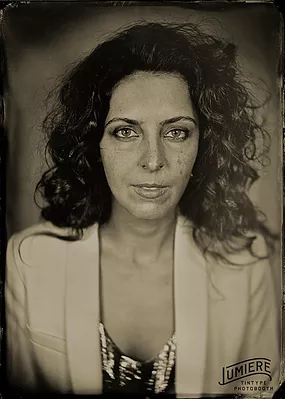
Participant
Sarah Scaturro
Chief Conservator
Cleveland Museum of Art
Cleveland, OH, USA
Sarah Scaturro is the Eric and Jane Nord Chief Conservator of the Cleveland Museum of Art. Previously, she was the Head of Costume Institute Conservation, Metropolitan Museum of Art. She received her training in textile and fashion conservation, curating, and history at the Fashion Institute of Technology in 2006. She is currently a PhD candidate at Bard Graduate Center, writing her dissertation on the professionalization of costume conservation.
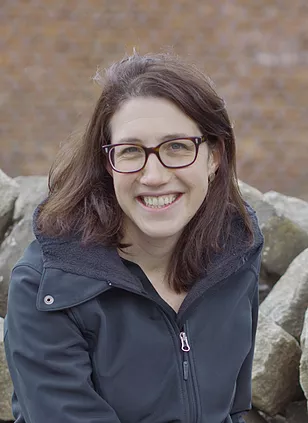
Participant
Anna Serotta
Associate Conservator
Metropolitan Museum of Art
New York City, NY, USA
Anna Serotta is an objects conservator at The Metropolitan Museum of Art where she is primarily responsible for the conservation of the Egyptian Art collection. Her research interests span a broad range of topics, including stone carving technology, technical imaging and the ethical care of human remains. Anna has worked as an archaeological field conservator on sites in Turkey, Greece, Italy and Egypt, including at The Met’s excavation at Dahshur. She is a Fellow of the American Academy in Rome as well as a guest lecturer at the Institute of Fine Arts, New York University.
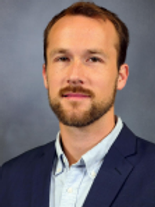
Poster Presenter
Lukas Simon
Group Leader Computational Biology
Therapeutics Innovation Center
Baylor College of Medicine
Houston, Texas, USA
Lukas Simon is the Group leader in Computational Biology at the Therapeutic Innovation Center at Baylor College of Medicine in Houston, Texas. Simon earned his Ph.D. in Structural and Computational Biology and Molecular Biophysics at Baylor College of Medicine in 2016 before starting his postdoctoral training at the Institute of Computational Biology at the Helmholtz Research Centre in Munich, where he was awarded a Marie Sklodowska-Curie postdoctoral fellowship. After this postdoctoral training, Lukas Simon was an Assistant Professor of Health Informatics at the University of Texas Health Science Center in Houston in the Center for Precision Health. His research focuses on the development and application of data science to biomedical, molecular data. More specifically, his expertise includes bioinformatic analysis and computational modeling of next generation sequencing data such as (single-cell) RNA-sequencing.
Poster: Microbiome reveals history of human-interactions in the museum – a pilot project

Poster Presenter
Stefan Simon
Director
The Rathgen Research Laboratory
The National Museums Berlin
Berlin, Germany
Stefan Simon is since 2005 Director of the Rathgen Research Laboratory with the National Museums Berlin. Trained as a heritage scientist, Simon earned his Ph.D. in Chemistry from the Ludwig Maximilian University, Munich. He served as a Council Member and Vice President of ICCROM, the International Centre for the Study of the Preservation and Restoration of Cultural Property. As Inaugural Director of Yale’s Institute for the Preservation of Cultural Heritage and Director of the Yale’s Global Cultural Heritage Initiatives (2014-2019), Stefan Simon prioritized the advancement of sustainable conservation strategies triggered by global climate change and the green museum debate, and questions of conservation documentation, authenticity and access in the digital age. Between 2001 and 2005 he led the Building Materials Section at the Getty Conservation Institute, Los Angeles. Simon is a corresponding member of the German Archaeological Institute, and has been recognized with Honorary Professorships at X ́ian Jiaotong University, China, and the Technical University Berlin. He has co-authored and published more than 150 articles on the preservation of cultural heritage.
Poster: Microbiome reveals history of human-interactions in the museum – a pilot project
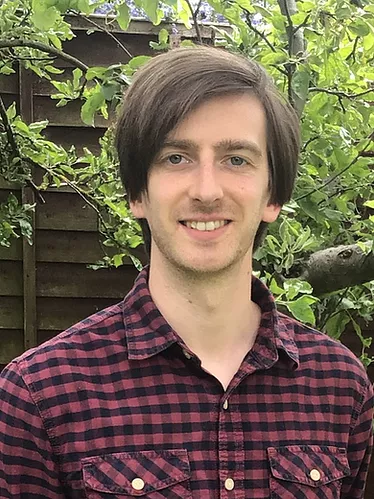
Team Presenter
Alister Sutherland
Postdoctoral Researcher
The GLOBE Institute
University of Copenhagen
Copenhagen, Denmark
Alister Sutherland is the historian for the ArcHives project. His current research focuses on the seals and sealing practices of lower status men and women in medieval England and using the biomolecular data obtained from the seal fragments to explore a number of questions.
Session: ArcHives: Beeswax as a Biomolecular Archive (an exploratory investigation)
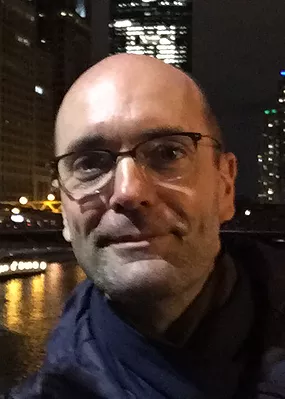
Participant
Ken Sutherland
Director, Scientific Research
Art Institute of Chicago
Chicago, IL, USA
Ken Sutherland is Andrew W. Mellon Director of Scientific Research in the Department of Conservation and Science at the Art Institute of Chicago, where he oversees a team engaged in the scientific study of the museum’s collections. His own research interests concern the characterization of organic materials in works of art, using mass spectrometric and other analytical techniques, to inform an understanding of their technique, condition and appearance.
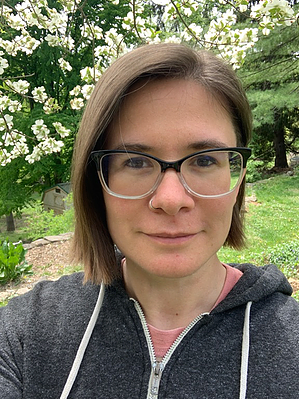
Participant
Julia Sybalsky
Conservator
American Museum of Natural History
New York City, NY, USA
Julia Sybalsky is an objects conservator at the American Museum of Natural History in the Natural Science Conservation lab. Her work is focused on the preservation of scientific specimens on exhibit and in the museum’s research collection, as well as conservation research that supports these efforts. She is regularly involved with allied professional organizations and is a graduate of The Conservation Center of the Institute of Fine Arts, New York University, where she teaches as an adjunct professor.
T
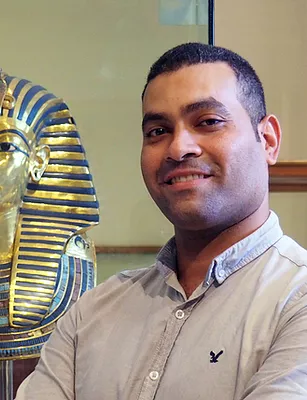
Participant
Ahmed Tarek
Head of Human remains Laboratory
Conservation Specialist
The Grand Egyptian Museum
Giza, Egypt
Ahmed Tarek has Ph.D. & M.S. from Conservation Department, Cairo University. He is Head of the Human Remains Laboratory & Conservation Specialist of Organic Materials at the Grand Egyptian Museum Conservation Center (GEM CC). He is interested in materials & conservation science; manufacturing techniques of archaeological objects; analysis of deterioration and documentation. Currently, he has started a postdoctoral (Andrew W. Mellon Conservation Fellowship, Objects Conservation) from The Metropolitan Museum of Art.
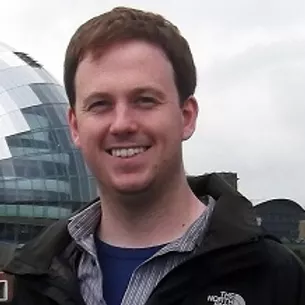
Team Presenter
Matthew Teasdale
Research Associate
McDonald Institute for Archaeological Research
Department of Archaeology
University of Cambridge
Cambridge, UK
Matthew graduated with a BSc in human genetics (2007) and an MRes in bioinformatics (2008) from Newcastle University. He then moved to Trinity College Dublin to complete a PhD in genetics (2013) as part of the Marie Skłodowska-Curie initial training network LeCHE, specialising in the analysis of ancient DNA. He then conducted further postdoctoral research in archaeogenetics at Trinity College Dublin as part of the ERC funded CodeX project. He then completed a 2-year Marie Skłodowska-Curie research fellowship at the university of York. In 2019 Matthew joined the McDonald Institute for Archaeological Research as a research associate as part of the Beasts to Craft project.
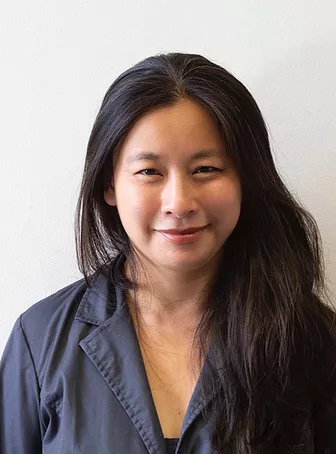
Steering Committee/Invited Speaker
Amy Tjiong
Associate Conservator
American Museum of Natural History
New York, New York, USA
Amy Tjiong is an Associate Conservator in the Anthropology Department of the American Museum of Natural History working on the renovation of the Northwest Coast Hall. Her professional interests include researching the properties and uses of cultural heritage materials and working to support community-led museum practices. She has written articles and presented on the significance of gut skin in Yupik communities and collaboration within the conservation profession. She is currently pursuing a PhD in Anthropology at the CUNY Graduate Center.
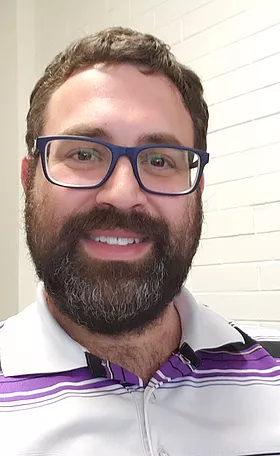
Poster Presenter
Shanan Tobe
Senior Lecturer in Forensic Science
College of Science, Health, Engineering and Education
Murdoch University
Perth, Australia
Shanan Tobe is a Senior Lecturer in Forensic Science Research and Integrity Advisor Academic Chair Forensic Biology and Toxicology. She currently holds funding with the Australian Research Council and the Australian Plant Biosecurity Fund. She is a molecular biologist/forensic science. She applies her forensicexpertiAse to other scientific problems including evaluation of art using molecular biology.

Steering Committee
Caroline Tokarski
Professor
University of Bordeaux
Researcher of the Institut Universitaire de France
Head of the Proteome Platform of Bordeaux
Bordeaux, France
Caroline Tokarski is an analytical chemist specialized in high resolution mass spectrometry. Her research is focused on methodological developments for analysis of organic material from native or transformed biological samples. She adapted omics techniques to cultural heritage samples for accurate identification of proteins/lipids/polysaccharides, their modifications and their biological origins. Her current work is focused on organic networking and degradation mechanisms in Cultural Heritage samples.
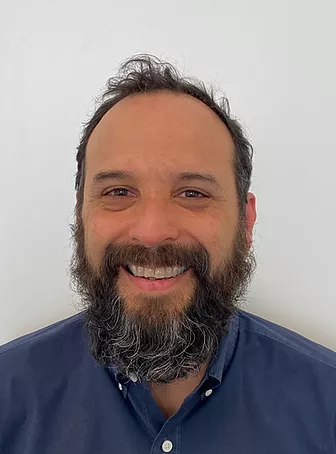
Steering Committee
Frank Trujillo
Drue Heinz Book Conservator
The Morgan Library & Museum
New York, New York, USA
Frank Trujillo is the Drue Heinz Book Conservator in the Thaw Conservation Center at the Morgan Library & Museum. He holds a MSLIS with an Advanced Certificate in Conservation from the University of Texas at Austin and a BA from the University of Notre Dame. His research has focused on the materials and techniques of medieval manuscripts with a particular focus on French Romanesque bindings and the ninth and tenth century Coptic bindings collection at the Morgan.
V
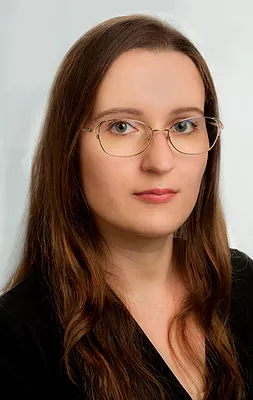
Team Presenter
Katarzyna Anna Vargas
Conservator
New-York Historical Society Museum & Library
New York, New York, USA
Katarzyna Vargas works at the New-York Historical Society Museum & Library as a traditional conservator. She works mostly with library collections on single item, and collection level conservation treatments and preservation measures.
Session: Extracting Stories from DNA preserved by 19th century Americana

Participant
Daniel Vallejo
Postdoctoral fellow
Georgia Institute of Technology
Atlanta, GA, USA
Daniel Vallejo is a postdoctoral fellow in Facundo Fernández’s group at the Georgia Institute of Technology. His interest is to apply his Ph.D. training in structural biology and ion mobility-mass spectrometry methodology development towards the structural and biophysical stability characterization of proteins found in paintings and to develop a community driven database for proteomic analysis of objects of cultural heritage.
W

Team Presenter
Ann Wagner
Curator of Decorative Arts
Winterthur Museum, Garden and Library
Winterthur, Delaware, USA
Ann K. Wagner, curator of decorative arts, is responsible for approximately 20,000 objects of silver, metalware, and related composite materials such as lighting, firearms, and organics at Winterthur Museum in Delaware. She joined the curatorial staff
immediately following her master’s degree from the Winterthur Program in American Material Culture. Ms. Wagner previously was the curatorial assistant for the department of European and American decorative arts at the Seattle Art Museum.
She earned a Master of Arts degree in Art History from the University of Washington in Seattle after graduating summa cum laude from Wheaton College, Massachusetts. At Winterthur, Ms. Wagner enjoys interpreting decorative arts and material culture through exhibitions, workshops, and classes for the public, scholars, and students. She has spoken to audiences from Los Angeles to Williamsburg and has written articles about American silver for publications including The Magazine Antiques, Fine Art & Antiques, Silver Magazine, and The Decorator. She was an invited contributor to the recent book American Silver in the Art Institute of Chicago, and co-authored a book and co-curated the major traveling exhibition titled: Silversmiths to the Nation: Thomas Fletcher and Sidney Gardiner, 1808-1842.
Her recent projects include curating and contributing to Winterthur exhibitions: Outside In: Nature-Inspired Design; Bearing Witness; Made You Look!; Re-Vision 20/20; Artificial Light; and Striking Beauties (featuring Winterthur’s clocks). She coordinated and participated in a two-day conference, Creating Brilliance: A 21 st Century Look at 19 th Century Lighting at Winterthur in October 2017. She is also the project manager of a three-year NEH grant to catalogue Winterthur’s hard matrix organics collections.
Ms. Wagner is an alumna of the Attingham Summer School, Society of Winterthur Fellows, and member of the Association of Art Museum Curators, the London Silver Society, the American Ceramics Circle, The Royal Oak Foundation, and a newly elected board member for the New York Silver Society.
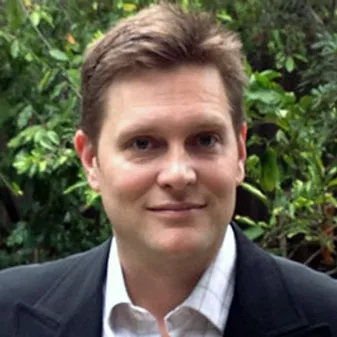
Participant
Marc Walton
Co-Director of the Center for Scientific Studies in the Arts
Research Professor
Northwestern University
Evanston, IL, USA
Marc Walton is the co-Director of the Center for Scientific Studies in the Arts (NU-ACCESS) and Research Professor of Materials Science at Northwestern University. At NU-ACCESS, he leads multiple scientific research projects to investigate art objects in collaboration with cultural heritage institutions representing a broad spectrum of disciplines (from anthropology to contemporary art) and geographical reach (both U.S. and internationally). Professor Walton's principal area of research focuses on the trade and manufacture of objects, and on developing imaging technologies in the field of conservation science, resulting in over 100 peer-reviewed articles
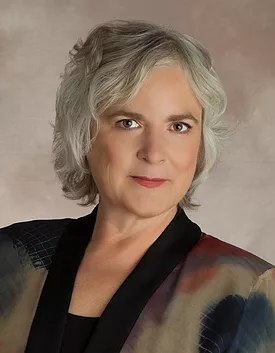
Poster Presenter
Laurie Waters
Retired
Los Alamos National Laboratory in April 2012
Currently doing contract work
Laurie Waters is a Nuclear Physicist by training, having received her PhD at the State University of New York in 1990. For 21 years she worked at Los Alamos National Laboratory, doing experimental physics, and extensive simulations of radiation transport. Much experimental work was done at the LANSCE 800 MeV proton accelerator, and she also headed the team that formed the newest division in the American Nuclear Society; the Accelerator Applications Division. All this work has giving She has also researched, collected, made, and taught bobbin and needle lace for over 50 years. Her collection has ~1,400 pieces of lace from all periods, as well as extensive equipment, pattern, literature (over 3,000 works), and other lace-related items. She also recently adapted one of their radiation transport simulation codes to track visible light through a water-filled glass focusing lamp used by lacemakers to focus light on their work. She has given several lectures on lace and science, one at Brookhaven National Laboratory in New York. She is also a published author of a paper at the Textile Society of America at their 2012 symposium.
Poster: Minimally invasive analysis: Fact or fantasy? The challenge of 14C dating Early Modern material
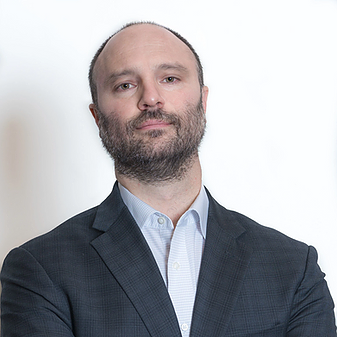
Participant
John Wilson
Founder and CEO
ProtiFi
Melville, NY, USA
Dr. John P. Wilson, Ph.D., is Founder and CEO of ProtiFi, an omics-solutions innovator with the goal to bring precision omics to life™ originally spun out of Cold Spring Harbor Laboratory (CSHL). Dr. Wilson has dedicated his career to developing new transformative technologies to increase the speed, robustness and reproducibility of omics analyses. Technologies include the S-Trap sample preparation system and SimpliFi, ProtiFi's cloud-based, intuitive omics analysis platform. He received his PhD from the Rockefeller University and postdoced at CSHL.
Y
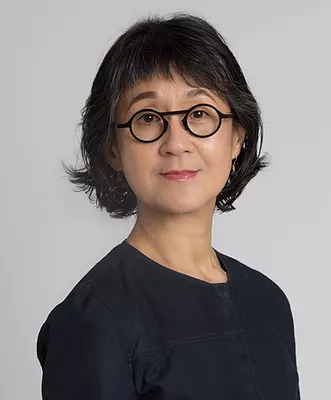
Participant
Hwai-ling Yeh-Lewis
Senior Collections Manager
Asian Art
The Metropolitan Museum of Art
New York, New York, USA
Hwai-ling Yeh-Lewis oversees the storage and care of over 36,000 works in the Asian Art collection. This includes all administration procedures related to acquisitions, incoming and outgoing loans, the collection database, exhibitions, and collection inventory. She also manages internal and external requests for access to the collections, and works with the collections team to facilitate gallery installations and implement the highest standards for collection care. She received her MS in education from Indiana University.
